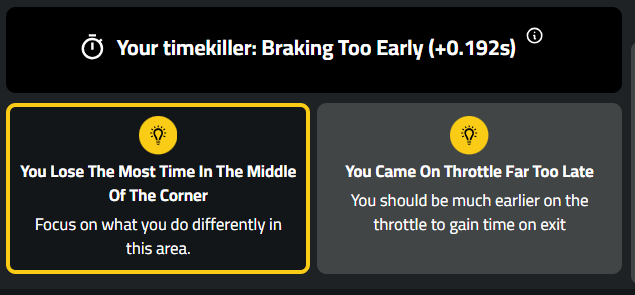Aston Martin V8 Vantage GT3 Mount Panorama Hot Lap Analysis
Let’s take a look at this hot lap of Mount Panorama in the Aston Martin V8 Vantage GT3 driven by HYMO.
The Track
Mount Panorama, more commonly known as Bathurst, is an iconic racing circuit located in New South Wales, Australia. Renowned for its gruelling layout and dramatic elevation changes, the track was first opened to racing in 1938. It spans 6.213 kilometres with a total of 23 turns, each presenting its unique challenge. The circuit is characterised by its combination of long, high-speed straights, tight bends, and the famous Mount Panorama itself, offering spectacular views and demanding utmost precision from drivers.
Bathurst is synonymous with the Bathurst 1000, one of the most prestigious endurance races in the world. This event, part of the Supercars Championship, is a true test of endurance, skill, and strategy, drawing teams and drivers from across the globe to compete in this intense and exhilarating race. The Bathurst 1000 is not just about speed; it's about durability, teamwork, and mastering the track's notorious sections like The Dipper, Forrest's Elbow, and Conrod Straight under intense race conditions.
Thankfully, the HYMO setup used in this hot lap video is available for you to try HERE.
Sim Racing Top Tips
Differential preload, often referred to as diff preload, is a critical aspect of vehicle setup in GT3 racing and sim racing, such as in Assetto Corsa Competizione (ACC). It plays a significant role in how power is distributed between the left and right wheels of a car, particularly during cornering, acceleration, and off-throttle scenarios.
The diff preload essentially refers to the initial load or torque applied to the differential's clutch pack before any torque from the engine is applied. This setting influences the differential's behaviour in transferring torque between the wheels. A higher preload means more torque is required to overcome the initial resistance in the differential, leading to a more locked behaviour. This can enhance traction when accelerating out of corners, as it forces the wheels to turn at more similar speeds, reducing wheel slip.
However, a higher preload also makes the car more prone to understeer during off-throttle and mid-corner scenarios because it resists the natural tendency of the inside wheel to turn slower than the outside wheel. Conversely, a lower diff preload results in a more open differential behaviour, allowing the wheels to rotate at different speeds more freely. This can improve the car's turn-in and reduce understeer but may lead to reduced traction and increased wheel spin under acceleration.
Fine-tuning the differential preload is about finding the right balance for the track, driving style, and prevailing conditions. It's about ensuring optimal traction, stability, and cornering behaviour. In a technically demanding motorsport like GT3 racing and in highly realistic sim racing platforms, mastering the diff preload setup is key to achieving competitive performance and consistent lap times.
Don't know what you can do to go faster? Use the HYMO hotlap to find out.
To see full lap analysis of your own driving, you can sign up to Track Titan for FREE today here.


.png)























